Can You Plant Begonias and Geraniums Together? Tips for a Vibrant Garden Duo
If you’ve ever wondered whether begonias and geraniums can share space in your garden, you’re not alone. These two popular plants can definitely coexist if you meet their specific needs. Begonias and geraniums can thrive together in garden beds or containers, as long as you provide the right light and watering conditions. This pairing offers a beautiful mix of vibrant blooms and lush foliage, creating a stunning garden display.
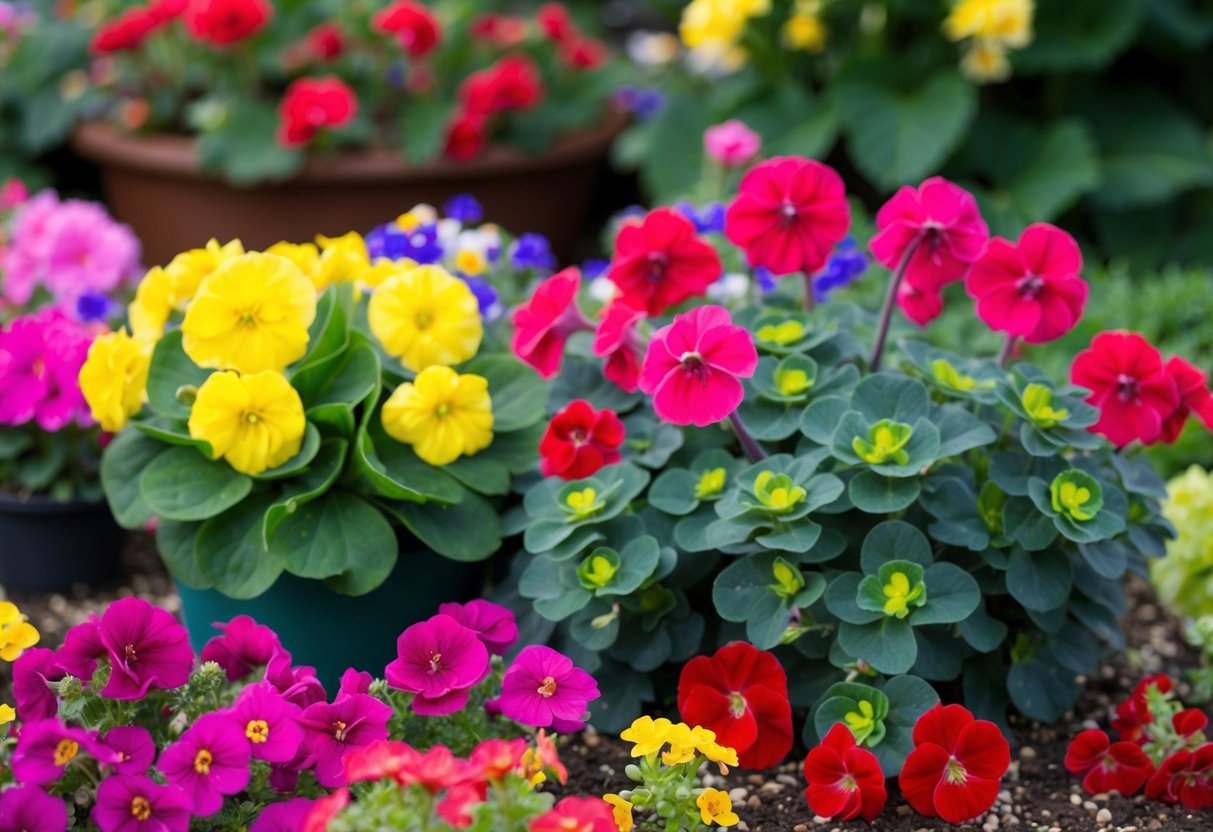
Companion planting with begonias and geraniums allows you to enjoy a variety of colors and textures. Begonias often have waxy leaves and come in shades of red, pink, and white, while geraniums bring unique leaf shapes and can add pops of purple, orange, or even variegated patterns. Together, they create visual interest and diversity that can transform any garden.
Whether your garden space is large or small, mixing these plants can offer both beauty and practicality. With the right setup, begonias and geraniums can become the stars of your outdoor area. Explore different arrangements and enjoy the symphony of colors and shapes they bring to your green spaces.
Understanding Companion Planting
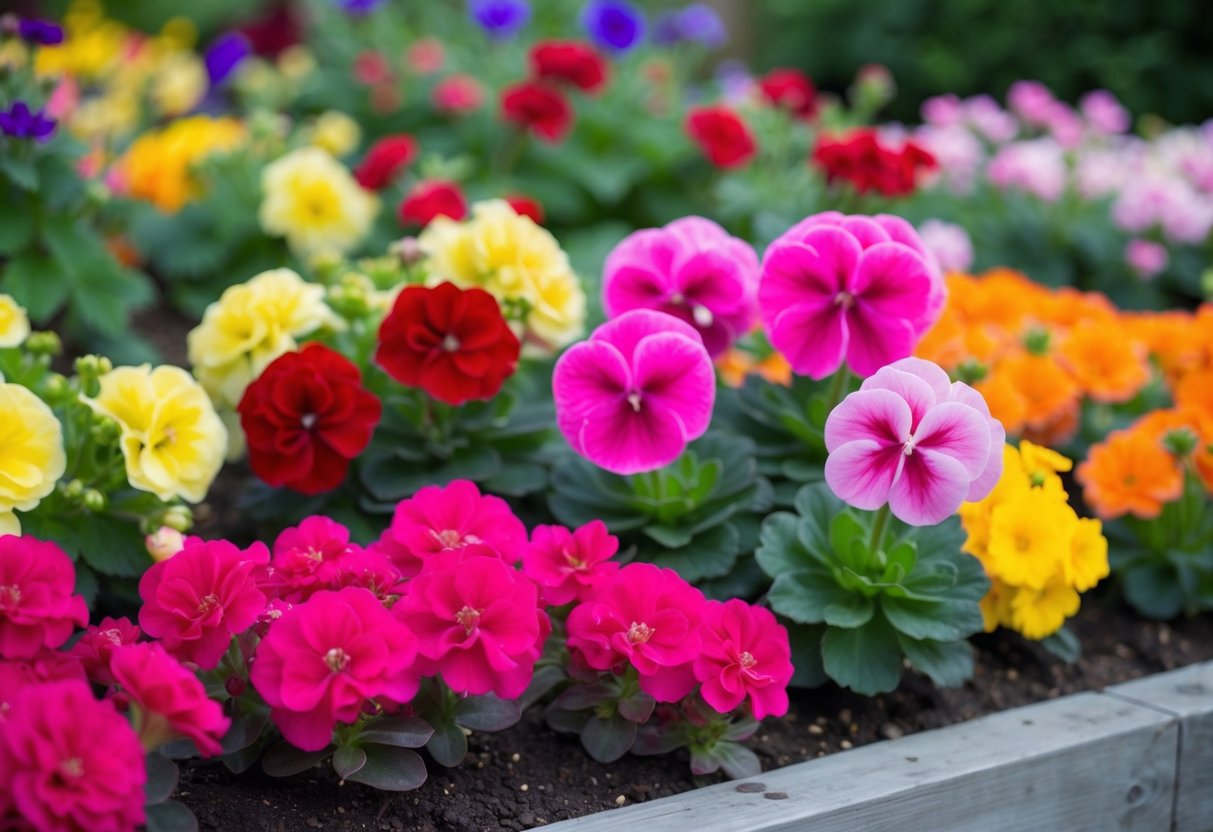
Companion planting is a thoughtful way to design your garden. You pair certain plants together so they can help each other grow. These plant buddies can share nutrients, improve growth, and even keep pests away.
When choosing companion plants, think about their needs. Are they sun-lovers or do they prefer shade? Do they like moist soil or need it to be well-drained? Knowing these details can make a big difference.
Sunlight is super important. Some plants, like begonias, enjoy partial shade, while others might need full sun. Make sure you’re matching plants with similar light needs to keep everyone happy.
Soil conditions matter too. Your garden’s soil should be suited to both plants. Begonias and geraniums, for example, thrive in well-drained soil. If your soil is too heavy, you might want to mix in some compost or sand.
Here are a few gardening tips to help you out:
- Check soil drainage: Test your garden soil by seeing how quickly water drains. If it pools, you might need to add more organic matter.
- Observe sunlight: Spend a day watching how the sun moves across your garden. This will help you place your plants in the right spots.
- Mix and match: Experiment with different plant pairs. See which ones thrive together in your garden space.
Remember, every garden is unique. A bit of trial and error can help you find the best plant companions for your own space.
Characteristics of Begonias

Begonias are popular for their vibrant flowers and diverse foliage, making them a favorite in many gardens. Understanding how to care for them and the different varieties available can help you integrate them into your garden effectively.
Caring for Begonias
When planting begonias, it’s important to focus on their care requirements. These plants thrive in well-drained soil and prefer environments where they get partial shade. This makes them perfect for a shade garden or as companion plants for more sunlight-loving species.
Regular watering is essential. Let the soil dry slightly between waterings to avoid root rot, but don’t let it dry out completely. During their growing season, begonias benefit from a balanced, water-soluble fertilizer every couple of weeks.
Clay pots can be ideal since they allow for better moisture control. Use a potting mix that offers good drainage to promote healthy growth and flowering.
Begonia Varieties and Their Uses
There are several varieties of begonias, each with unique characteristics. Wax begonias are a popular choice for bedding and ground cover due to their colorful flowers and lush foliage.
Tuberous begonias are known for their large, showy blooms. They’re great for hanging baskets and pots, offering a splash of color wherever they’re placed.
Angel wing begonias have striking leaves and are often grown for their foliage rather than their flowers. They make for eye-catching indoor plants or sheltered spots outdoors.
Experimenting with different varieties can provide a rich tapestry of colors and textures in your garden. Explore how each type fits into your landscape and enjoy the beauty and diversity they bring.
Characteristics of Geraniums
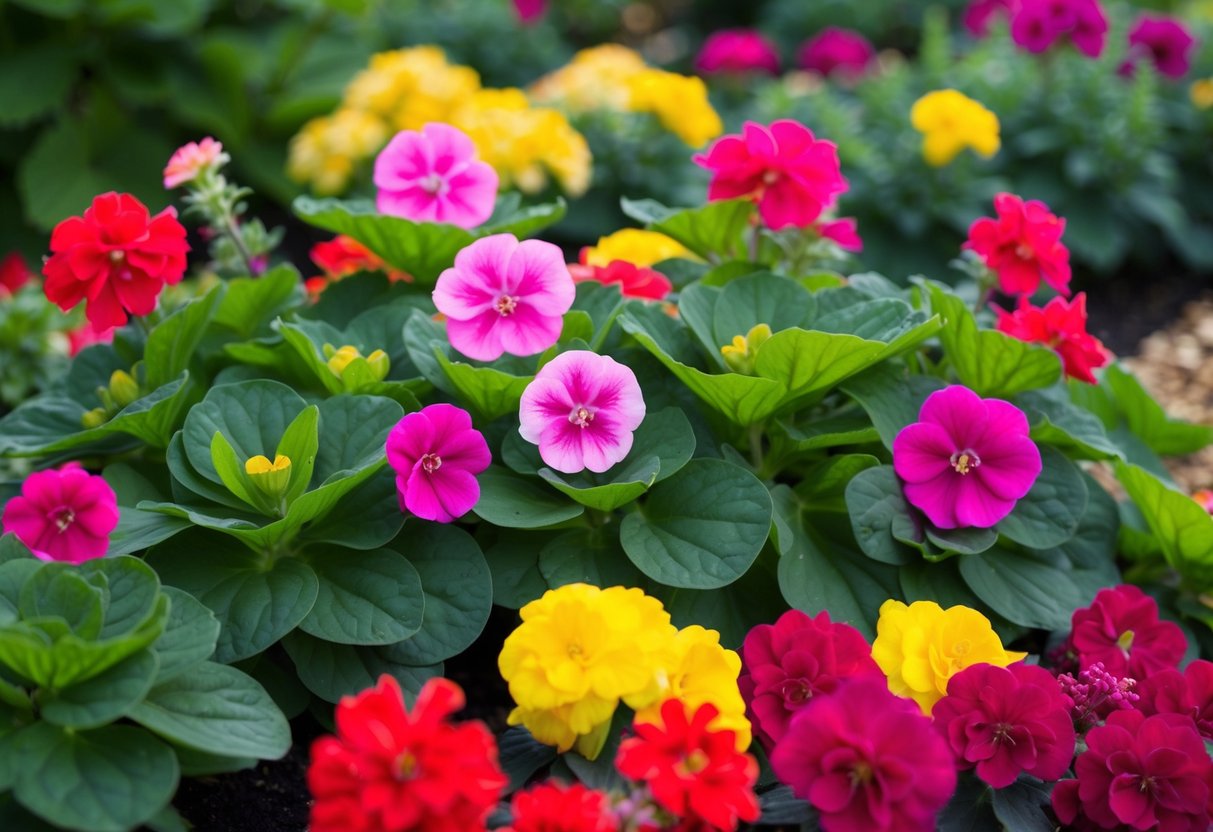
Geraniums are popular flowering plants known for their vibrant blooms and varied uses. With proper care, these versatile plants can thrive in different environments, making them a favorite for gardeners.
Caring for Geraniums
Geraniums require specific conditions to grow well. They love sunlight, so make sure they get about six to eight hours of it each day. Choose areas where they can soak up plenty of rays. It’s important to plant them in well-draining soil to prevent root rot, which can happen if the roots sit in water too long.
Water geraniums when the top inch of soil feels dry. Overwatering can harm them, so it’s vital to balance moisture without drenching them. Fertilize every few weeks during the blooming season to encourage growth. This keeps geraniums healthy and promotes vibrant flowers.
If you’re using them as a ground cover, allow enough space for spreading. Geraniums can also be grown as annuals, especially in colder climates where they don’t survive winter.
Geranium Varieties and Their Uses
There are various types of geraniums, each with unique features. Zonal geraniums are famous for their round clusters of flowers and are often used in pots. Regal geraniums boast large, showy blooms and are perfect for adding drama to gardens.
Ivy geraniums spread nicely and work well in hanging baskets. They can trail down beautifully from containers. Geraniums are also used for their scented leaves, which can have a range of fragrances from lemon to rose.
Each type offers something unique, ensuring you can find a geranium that fits your needs. Whether as a striking ground cover or dramatic pot plant, with so many varieties, you have plenty of stunning options.
Designing a Mixed Garden Bed or Container
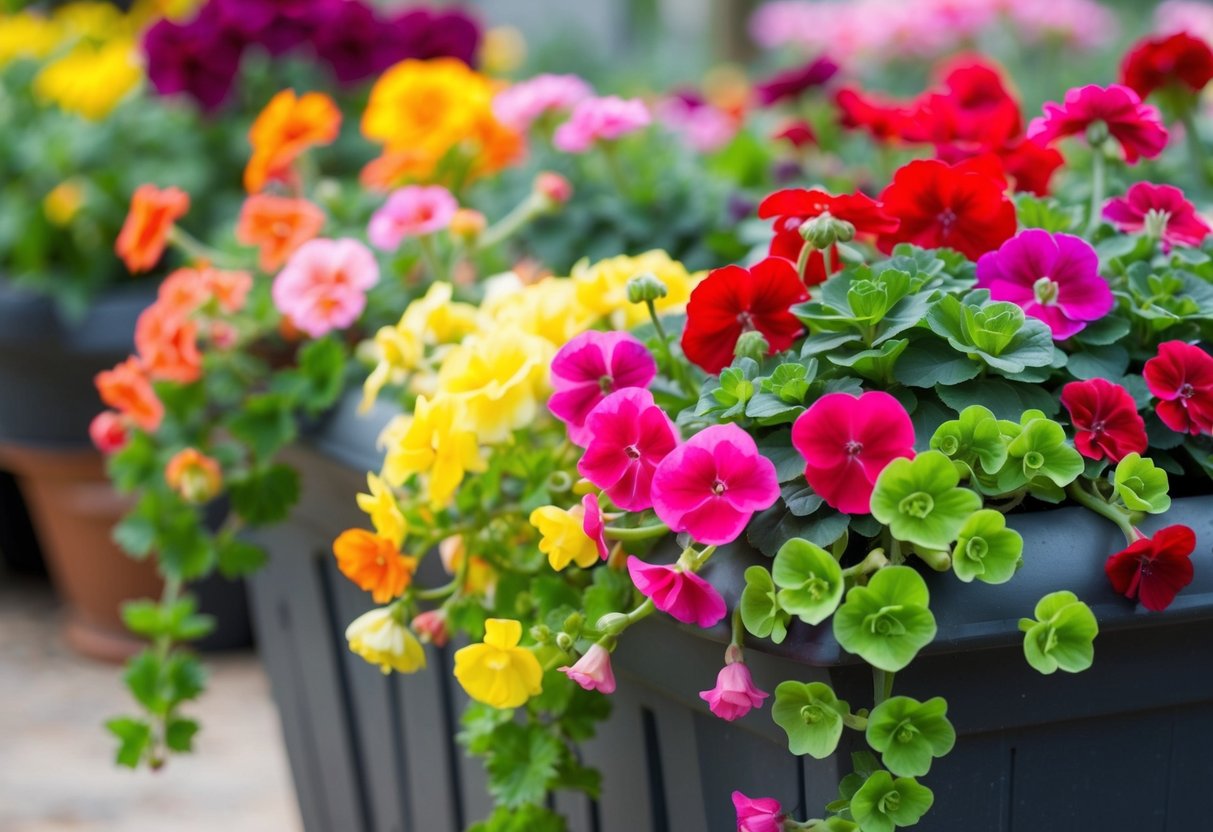
When combining begonias and geraniums, consider the size and type of containers or garden beds, and how you will place the plants to ensure they thrive together. Careful planning will result in a vibrant and balanced display.
Choosing the Right Containers
Selecting the perfect container or garden bed is key for your mixed garden. Size matters: ensure the container is large enough to support both begonias and geraniums, allowing room for roots to expand. A pot about 12-18 inches wide will typically work well.
Material is important too. Clay pots offer great drainage, while plastic pots retain moisture better, which is beneficial for both begonias and geraniums. Make sure there are drainage holes to prevent waterlogging, which can rot roots.
Consider using hanging baskets if you’re short on ground space. They can look stunning with trailing plants spilling over the sides. Just ensure you water them regularly, as they dry out faster than larger containers or beds.
Layout and Planting Techniques
Arrange your begonias and geraniums in a way that each gets the right amount of sunlight and space. Light conditions are crucial, as both types of plants thrive in partial shade. Arrange taller plants like geraniums towards the back and place shorter begonias towards the front for balanced sunlight access.
For a neat layout, plant in odd numbers, like groups of three or five. This creates a natural, flowing look rather than a rigid pattern. You can even incorporate companion plants, such as Boston ferns, to add texture and fullness.
Water the container thoroughly after planting to help settle the soil around the roots. Regular watering is essential, but avoid overwatering to prevent root rot. Keep an eye on moisture levels and adjust based on season and weather.
Other Companion Plants to Consider
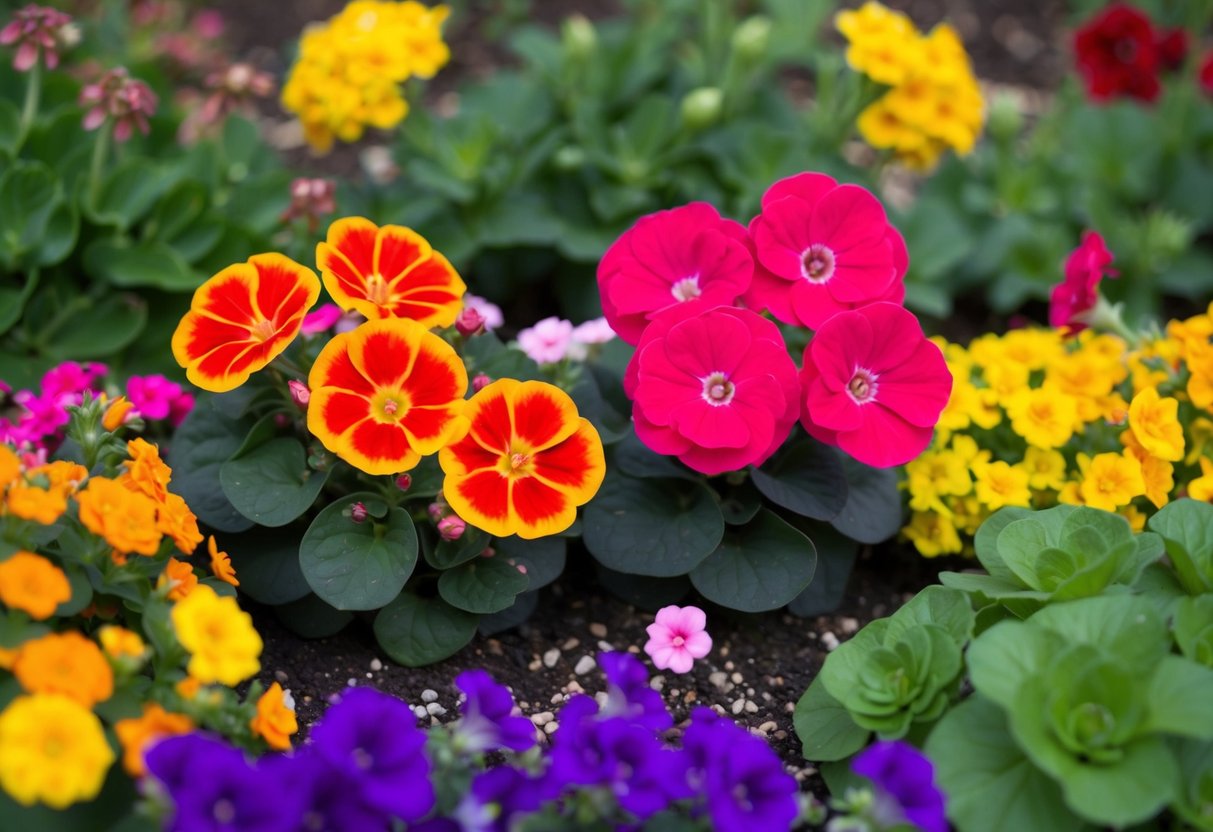
When you’re planning to add more companions to your begonias and geraniums, consider several plants that can thrive together and add beauty to your garden.
Ferns, especially the Boston fern, are a great match. They love shade and bring interesting textures to your garden.
Impatiens and coleus offer colorful blooms and vibrant foliage, respectively. These shade-loving plants can fill the garden with a splash of color.
Petunias are another choice. They mix well with begonias, adding a pop of bold color.
For those interested in perennials, hostas provide lush leaves and fit well in shaded areas. Their broad leaves can create a nice backdrop.
Torenia, known as the wishbone flower, and caladium with its heart-shaped leaves, both bring unique visuals. These can brighten your flowerbeds with striking colors.
Ornamental grasses like fiber optic grass can add height and texture. Pairing them with flowers like lobelia or coral bells creates a balanced look.
For a touch of elegance, consider silver nickel vine, which cascades beautifully. Meanwhile, black mondo grass can add a bit of drama to the mix with its dark leaves.
These options provide a variety of textures, heights, and colors, making them ideal companions for your begonias and geraniums.







